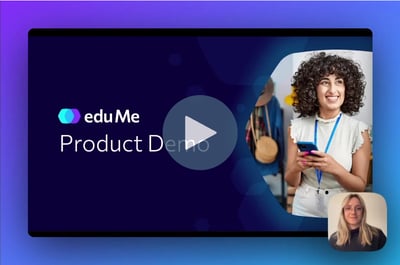Here's a typical conversation in the day of a learning designer:
Boss: "So we need to implement an onboarding program for new staff. Can you throw something together?"
You: "Sure, when do you need it?"
Boss: "Well... yesterday? But I guess the end of the week will do."
You: "🤯..."
Sound familiar? As much as you want to do a thorough needs analysis, develop a learner profile and produce a rocking instructional strategy, when faced with a tight deadline you might find yourself throwing the theory out the window and scrambling for a quick training solution. (You might even tell yourself ‘I’ll come back and tweak it later’... but we all know the chances of that happening.)
So is it realistic to try and follow a step-by-step development process for your training program, or is that completely impractical in the real world?
Failing to plan means planning to fail
Instructional design has its roots in the military, when large numbers of people needed to be trained quickly and effectively. And in corporate learning today, a plan is essential for launching your training on time and on budget.
Rushing into training development without making even a basic plan is a sure fire way to waste time and money, and will also result in disengaged employees because you haven’t considered their needs.
If you don’t know where you’re going…
Yep, any road will get you there.
Training is supposed to address a real business need and meet specific performance objectives. If you don’t take the time to nail these down, there’s next to no chance that you’ll achieve those goals - and that means poor training ROI.
So at the end of the day, following a systematic learning design process will save you time and money, help you achieve your training objectives AND make sure you’re on the same page as your boss. What’s not to like?
Where should I start?
There are dozens - if not hundreds - of learning design models to choose from, each of which has its fans and its critics. Most will work in any business context and with any learning approach, whether you’re using micro or macrolearning; an online, face-to-face or blended learning.
Let's take a look at a few options.
ADDIE
ADDIE is what most instructional designers are familiar with, and after almost 50 years it's still the most popular model to develop training programs. It represents a systems approach consisting of 5 connected phases: Analysis, Design, Development, Implementation, and Evaluation.
The beauty of ADDIE is that it's simple to understand and implement, and is very flexible - think of it as a sequence of agile iterations, rather than a waterfall approach.
Design thinking
You might have come across this in the field of UI/UX, but recently it’s being applied to other fields, including learning design. While ADDIE takes a systems approach, design thinking is more ‘human’ and solves problems by finding out what users really need.
There are five steps: Empathize, Define, Ideate, Prototype and Test. For example, you could start by observing or interviewing your learners to see what challenges they struggle with at work, and design the course with their needs in mind.
Action mapping
Developed in 2008 by Cathy Moore, this approach focuses on what people need to do, rather than what they should know. It prioritises business performance and works back from there, focusing on actions, not information. Training activities should model real world behaviours as far as possible - bite-sized video is one of the best ways to do this and doesn’t need to be Hollywood quality either (check out these tips for creating engaging videos that won’t break the bank).
Putting it all together
What many of these models have in common is that they are agile and iterative, making use of rapid prototyping to get feedback and finetune your training as you go. So it’s critical that your LMS allows you to:
-
develop high-quality, engaging content on the fly
-
deliver lessons to your users quickly, through any device
-
view analytics to make meaningful changes to the training.
And when the proverbial stuff hits the fan and you just don’t have the time to develop your own learning material, it helps to have a training partner who can provide high-quality bespoke content at a reasonable cost.
With eduMe, you’ll find it quick and easy to develop awesome content using our award-winning mobile learning platform - no technical skills required. And we’ll work with you to optimise your learning strategy, whether you need custom content, adaptation of existing training material or just some tips and advice.






